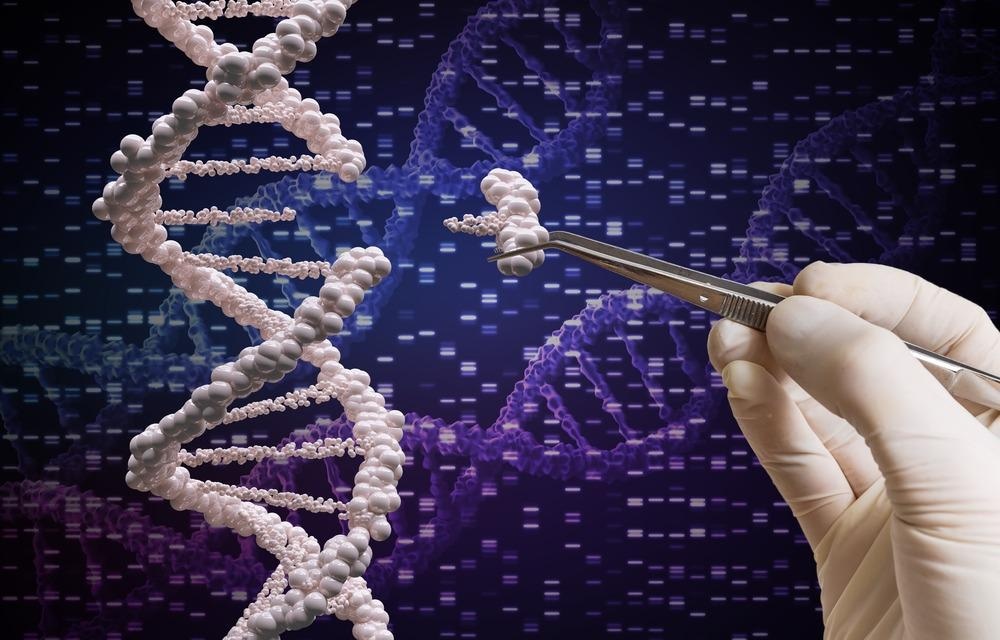Introduction
Predicting the Future of Medicine
Digital health, Robotics and Sensors
Gene Therapy and Gene Editing
Nanomedicine and Stem Cell Technology
References
Further Reading
What will the future of medicine look like? Will we manage to cure cancer? Will lab-grown organs render human donation obsolete? Is a widespread uptake of the male contraceptive wishful thinking or a futuristic possibility? Some things seem to be more predictable than others.

The future of medicine. Image Credit: everything possible/Shutterstock.com
What we do know is that medical care will be increasingly personalized, digital and data-driven. These changes are already well underway but look set to take off dramatically by the mid-century. This is in large part all thanks to innovations in artificial intelligence (AI) as well as increasingly economically viable routes toward personalized and gene therapeutic approaches to medicine. This article will look at some of the innovations which are a taster of things (that might be) to come.
Predicting the future of medicine
Although it is impossible to predict the future, it is possible to envisage change from a vantage point. In this sense, many of the changes we’ll see are already underway though still in their infancy.
Then again there are predications for innovations that we remain hopeful of but for whose fate is yet unknown. Will there ever be a cure for cancer? Will humans and AI merge and facilitate “the singularity” ––otherwise known as the technological singularity ––the point at which the growth of technology is rendered beyond human control and irreversible.
Those aspects of futuristic medicine that we can be sure of concern innovations in diagnostics, patient care and drug development. Here are some of the categories for which changes are anticipated: personalized medicine; nanoscale medicine; big data, biometrics and the internet of things (IoT); machine learning, AI and advanced analytics; stem-cell medicine; digital health; genetic engineering and bioprinting; gene therapy and editing; “internals,” robotics, nanorobotics, and bionics.
Other pioneering research efforts to look out for include the problem of antibiotic resistance: scientists are currently looking for ways to fortify our antimicrobial armory.
Digital health, robotics and sensors
In recent years there has been a revolution in wearable technology in association with the growth of the internet. People can self-monitor their own heart rate, blood pressure, dietary habits, the number of steps taken daily, and calories burned during exertion.
The number of devices connected to the internet has already seen a sharp uptake and by 2050 the figure is predicted to reach over 100 billion. This collection of devices connected to the internet is referred to as the Internet of Things” (IoT) or pertinent to medicine, the Internet of Medical Things (IoMT).
Cutting-edge technologies hold great future promise for innovation in medicine and healthcare. In the wake of the Covid-19 pandemic, we had a taster of how smartphones and computers could be harnessed to anticipate outbreaks of infectious disease. These technologies will play an important role in the future. As well as carrying technologies externally, we will also likely see patients wearing them internally too.
The use of sensors called ‘smart bodies,’ which are connected to the internet and reside inside the body, will likely play an important role in feeding back physiological information, such as blood pressure. These will function as an early warning system for impending disease.
Meanwhile, in the clinic, we are likely to see the utilization of medically informed ‘chatbots’ providing patients with information (thus relieving pressure on services). Robots will be able to perform surgery. It is even predicted that surgeons will be able to undertake procedures from a remote location.
Gene therapy and gene editing
Medical science will hold DNA sequencing data for tens of millions of patients, and this will better our understanding of disease. Moving toward the mid-century point, it is predicted that there will be routine DNA sequencing for every newborn baby. In the coming years, individual patient DNA analysis will likely enable the personalization of drug therapeutic approaches.
Gene editing ––whereby genes are deactivated or rewritten ––is currently a contested area of research. But the advent of CRISPR–Cas genome editing harbors the promise of the widespread use of gene therapy in addition to a big, but currently under-realized, part to play in drug discovery.
CRISPR–Cas genome editing utilizes a synthetic guide RNA in combination with an enzyme from the bacterial immune system (such as Cas9) to edit DNA with ‘unprecedented ease and precision’ (Scott, 2018).

Gene editing concept. Image Credit: vchal/Shutterstock.com
Nanomedicine and stem cell technology
Nanomedicine is the medical application of nanotechnology ––i.e., the use and application of materials with sizes in the nanometer range. Nanomedicine involves the use of nanomaterials or nanoparticles to transport and target drugs into the body. Without the use of nanotechnology, these drugs would either not be absorbed or, alternatively, would be naturally excreted. It is anticipated that the use of nanomaterials for diagnostics and drug delivery will play a much larger role than they currently do.
Future scientists will likely be manipulating cells at the molecular level, and this will further tap into opportunities for a personalized approach to medicine. When it comes to stem cell medicine the technology is still in its infancy, but it is predicted to play an important role in the future of medicine.
By taking 3D printing into the clinic, the advent of bioprinting with the utilization of stem cell technology could entail the manufacture of new biological materials. Human organs could be grown in the laboratory and the need for organ donation would be negated.
References
- Daniel, E. (2019) Future of healthcare: What will medicine look like in 2040? Verdict. Online: https://www.verdict.co.uk/future-of-healthcare/.
- Hodson, R. (2018) The future of medicine. Nature. Doi.org/10.1038/d41586-018-02472-6.
- Scott, A. (2018) How CRISPR is transforming drug discovery. Nature. Doi.org/10.1038/d41586-018-02477-1.
- University of California San Francisco (2020) What Will Health and Medicine Look Like in 2050? UCSF magazine. Online: https://magazine.ucsf.edu/what-will-health-and-medicine-look-2050.
- Williams, M. (2021) Life in 2050: A Glimpse at Medicine in the Future. Interesting Engineering. Online: https://interestingengineering.com/life-in-2050-a-glimpse-at-medicine-in-the-future.
Further Reading
Last Updated: Jun 8, 2022